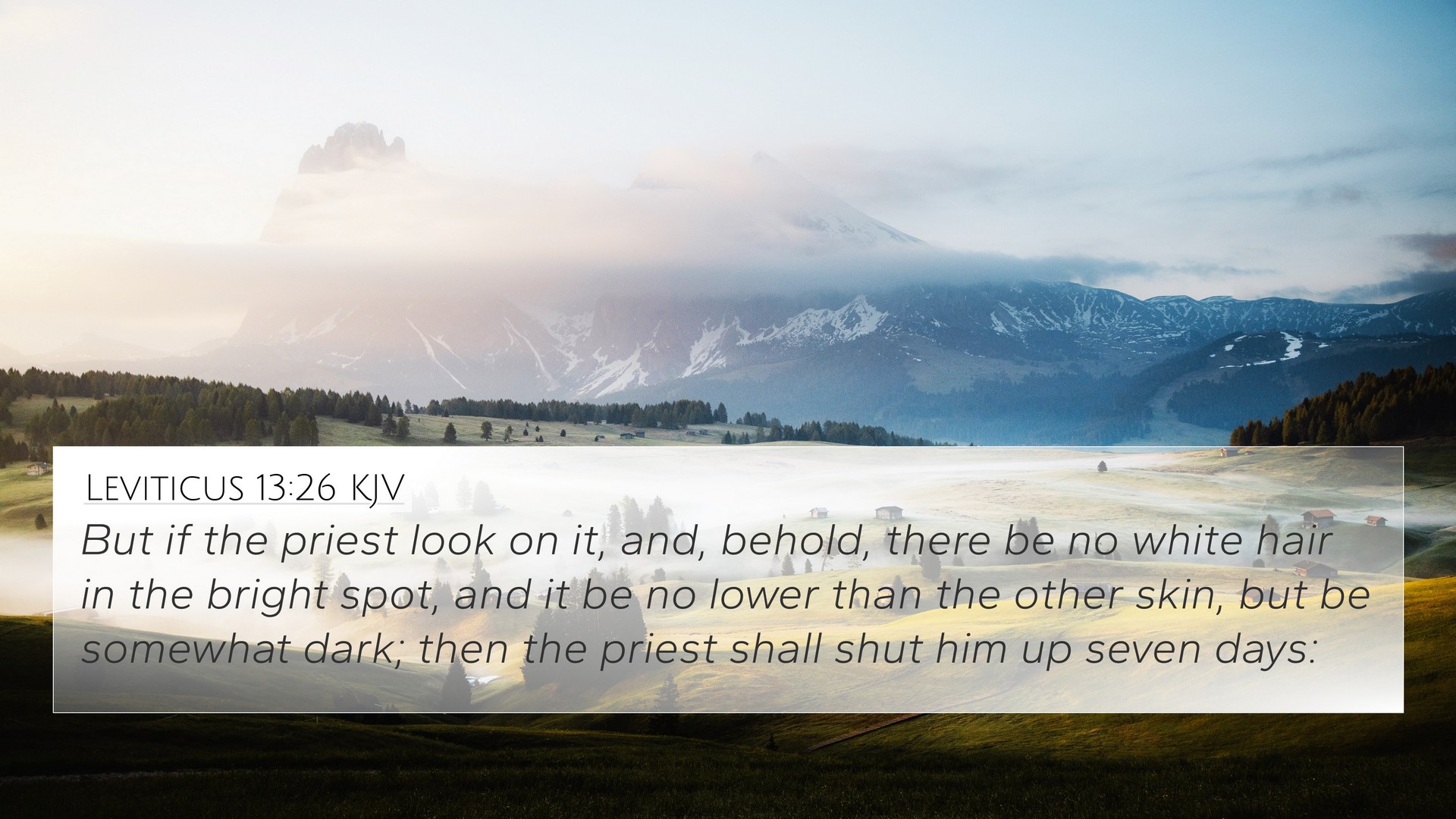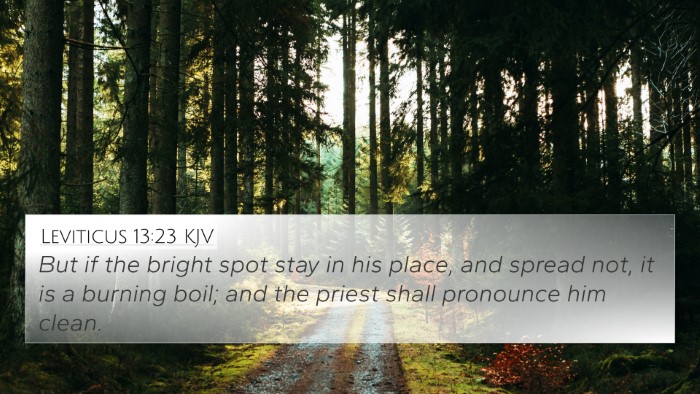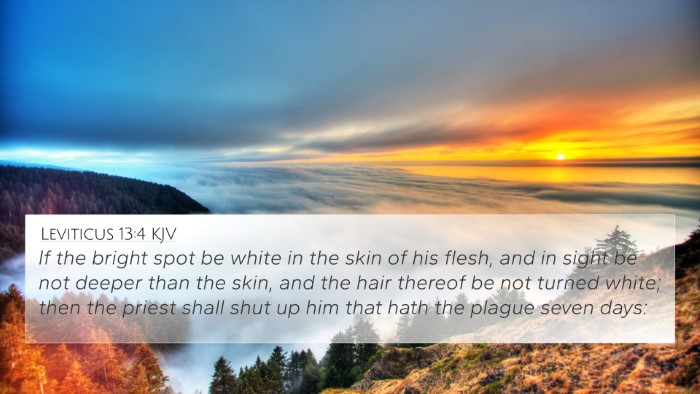Understanding Leviticus 13:26
Leviticus 13:26 states:
"But if the priest look on it, and, behold, there be no white hair in the bald head, and it be no lower than the other skin; it is a rising of the sore, and the priest shall pronounce him unclean." (KJV)
Summary of Meaning
This verse is a part of the Levitical laws concerning ceremonial cleanliness and health, specifically relating to skin diseases, commonly referred to as leprosy. Here, it represents a careful examination of a skin condition by a priest, emphasizing God's holiness and the importance of purity in the community.
Commentary Insights
-
Matthew Henry's Commentary:
Henry emphasizes the significance of the priest's role in examining the afflictions. He notes that the priest's discernment is crucial in determining whether the person is ceremonially clean or unclean. The absence of white hair signifies that the sore is not a malignant type, allowing for a judgment of uncleanness based on defined rules.
-
Albert Barnes' Commentary:
Barnes highlights the critical nature of ritual purity in the Israelite community. He interprets this verse to show the systematic approach to identifying disorders related to leprosy. The nuance of examination speaks to God's orderliness in law and health, allowing the faithful to know how to live a holy life.
-
Adam Clarke's Commentary:
Clarke discusses the overall context of the law given in Leviticus. He points out that distinguishing between clean and unclean is pivotal for the Israelites, as it indicates the moral and spiritual condition of the individual. This verse demonstrates that the condition of the body reflects a larger spiritual truth about holiness before God.
Cross-References
This verse relates to several other scripture passages that discuss purity, health, and the role of the priest:
- Leviticus 13:1-2: Discusses the initial examination of a person with a skin disease.
- Leviticus 14:1-32: Provides detailed instructions for cleansing individuals healed from leprosy.
- Numbers 5:2-3: Commands for the exclusion of individuals with leprosy from the camp.
- Mark 1:40-42: The healing of a leper by Jesus, demonstrating New Testament fulfillment of Old Testament laws.
- Luke 17:12-14: Jesus' healing of ten lepers and the response of faith.
- Hebrews 9:13-14: Talks about the purification of the flesh and our conscience through Christ.
- 1 Peter 2:24: Connects the concept of physical affliction with spiritual healing through Jesus' sacrifice.
Connections Between Bible Verses
This verse illustrates a broader theme within Scripture regarding the concept of purity and the role of priestly mediation. The implications of bodily cleanliness and holiness are present throughout the Bible:
-
Thematic Exploration:
There is a strong theme of "clean vs. unclean" that resonates through both the Old and New Testaments, reflecting humanity's separation from God and the process of reconciliation.
-
Inter-Biblical Dialogue:
Many verses in the New Testament fulfill and reinterpret these Old Testament laws, showcasing the transformative message of Jesus' work on the cross.
-
Biblical Cross-References:
By comparing Old Testament laws with the anticipations of the New Testament, believers can see how God’s design for purity transcends literal interpretations into spiritual applications.
Tools for Bible Cross-Referencing
Understanding Leviticus 13:26 and its surrounding verses can be enhanced through various Bible study tools:
- Bible Concordance: A comprehensive tool to find verses based on keywords.
- Bible Cross-Reference Guide: Useful for identifying related scriptures.
- Cross-Reference Bible Study: A method for deepening understanding through related passages.
- Bible Reference Resources: Collections of verses that can provide deeper insight and connection.
- Bible Chain References: Sequential connections through a series of verses that build upon each other.
Conclusion
Leviticus 13:26 exemplifies the intricate laws pertaining to health and purity as established by God. This verse connects deeply with various others throughout the Bible and invites exploration of God's call to holiness, as well as the significance of Jesus’ sacrifice that fulfills the law. The themes of clean versus unclean, the priest’s mediative role, and the healing ministry of Jesus create a rich tapestry of understanding for believers.




